Dichloropropene
- CAS NO.:563-57-5
- Empirical Formula: C3H4Cl2
- Molecular Weight: 110.97
- MDL number: MFCD20621156
- SAFETY DATA SHEET (SDS)
- Update Date: 2024-12-18 14:08:52

What is Dichloropropene?
Description
Because of the relative lack of nematicidal activity in 1,2-dichloropropane and the desire to eliminate groundwater contamination by a compound not useful for nematode control, 1,3-D became a highly successful nematicide. Although it also has fungicidal activity and insecticidal activity against wireworms in particular, the primary use of the compound is as a nematicide. On a weight basis, 1,3-D is the sixth most abundantly used pesticide in the United States (11); 1,3-D is classified as a possible or probable human carcinogen. Commercial formulations are liquids and contain two isomers. In one series of experiments, aqueous trans-1,3-D was 60% as toxic as the cis isomer, whereas in the vapor phase, trans-1,3-D was 90% as toxic as cis-1,3-D (12). In laboratory experiments simulating field situations, the trans isomer was completely ineffective against the potato cyst nematode Globodera rostochiensis (13).
The Uses of Dichloropropene
3,3-Dichloro-1-propene is a pollutant found in aquatic environments.
Health Hazard
Recommended Personal Protective Equipment: An approved full face mask equipped with a fresh black canister meeting specifications of the U.S. Bureau of Mines for organic vapors, a full face self-contained breathing apparatus, or full face air-supplied respirator; Symptoms Following Exposure: Smarting of skin and eyes. Prolonged contact of liquid with skin may cause second-degree burns; General Treatment for Exposure: INHALATION: remove patient to fresh air, keep warm and quiet; call physician immediately; give artificial respiration if breathing has stopped. INGESTION: call physician immediately. Induce vomiting by giving an emetic, e.g., 2 tablespoons table salt in glass of warm water. SKIN OR EYES: immediately remove contaminated clothing and shoes. Wash skin with soap and plenty of water. For eyes, flush immediately with plenty of water for at least 15 min. Call physician; Toxicity by Inhalation (Threshold Limit Value): Data not available; Short-Term Exposure Limits: Data not available; Toxicity by Ingestion: Grade 3;LD50 = 50 to 500 mg/kg; Late Toxicity: Data not available; Vapor (Gas) Irritant Characteristics: Vapors cause moderate irritation such that personnel will find high concentrations unpleasant. The effect is temporary; Liquid or Solid Irritant Characteristics: Causes smarting of the skin and first degree burns on short exposure and may cause secondary burns on long exposure; Odor Threshold: Data not available.
Chemical Reactivity
Reactivity with Water No reaction; Reactivity with Common Materials: No reaction; Stability During Transport: Stable; Neutralizing Agents for Acids and Caustics: Not pertinent; Polymerization: Not pertinent; Inhibitor of Polymerization: Not pertinent.
Properties of Dichloropropene
| Boiling point: | 82°C |
| Density | 1.1750 |
| refractive index | 1.4510 |
| Odor | Sweet; like chloroform. |
| EPA Substance Registry System | 1-Propene, 3,3-dichloro- (563-57-5) |
Safety information for Dichloropropene
Computed Descriptors for Dichloropropene
New Products
Indole Methyl Resin tert-butyl 9-methoxy-3-azaspiro[5.5]undecane-3-carboxylate Boc-His(Boc)-OH 2-CTC Resin 4-Chloro-7-tosy1-7Hpyrrolo[2,3-d]pyrimidine 5,7-Dibromo-1H-indole 2,5-dichloro-N-hydroxy-4,6-dimethylpyridine-3-carboximidamide 2,2-Dimethoxy-7-azaspiro[3.5]nonane hydrochloride 4-chloromethyl-5-methyl-1,3-dioxol-2-one (DMDO-Cl) R-2-BENZYLOXY PROPIONIC ACID 1,1’-CARBONYLDIIMIDAZOLE 1,1’-CARBONYLDI (1,2-4 TRIAZOLE) N-METHYL INDAZOLE-3-CARBOXYLIC ACID 4-((2-hydroxyethyl)thio)benzoic acid 1-(TERT-BUTOXYCARBONYL)-2-PYRROLIDINONE Methyl 6-methylnicotinate 3-Pyridineacrylic acid tert-Butyl carbazate TETRAHYDRO-2H-PYRAN-3-OL 2-((4-morpholinophenylamino) (methylthio) methylene) malononitrile 3-(4-morpholinophenylamino)-5-amino-1H-pyrazole-4-carbonitrile 2,4-dihydroxybenzaldehyde 1,3-Diethyl-1,3-Diphenylurea Methyl 2-methylquinoline-6-carboxylateRelated products of tetrahydrofuran
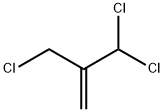
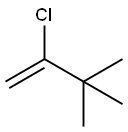
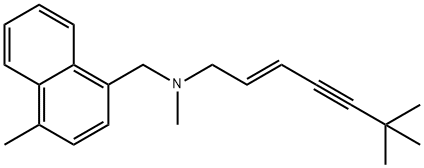
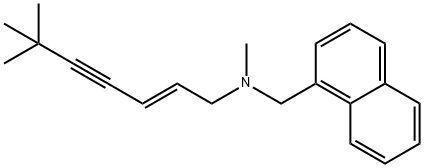

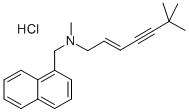
You may like
-
 Pyridine 99.5% HPLC /UV SpectroscopyView Details
Pyridine 99.5% HPLC /UV SpectroscopyView Details
110-86-1 -
 Guanine , 99%View Details
Guanine , 99%View Details
73-40-5 -
 Piperazine Spot supply, best priceView Details
Piperazine Spot supply, best priceView Details
110-85-0 -
 Potassium Hydroxide 90%View Details
Potassium Hydroxide 90%View Details
1310-58-3 -
 Dibutyl PhthalateView Details
Dibutyl PhthalateView Details
84-74-2 -
 Imidazole Spot supply, competitive priceView Details
Imidazole Spot supply, competitive priceView Details
288-32-4 -
 Octadecyl 3-(3,5-di-tert-butyl-4-hydroxyphenyl)propionate 98% (GC)View Details
Octadecyl 3-(3,5-di-tert-butyl-4-hydroxyphenyl)propionate 98% (GC)View Details
2082-79-3 -
 Thiourea 99% ARView Details
Thiourea 99% ARView Details
62-56-6
